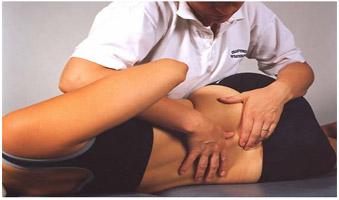Book review of Mobilization with Movement: The Art and the Science (2011) by Bill Vicenzino, Wayne Hing, Darren Rivett and Toby Hall

I clearly remember the first time I took a course in Mobilization with Movement (MWM). My entry level physical therapy training was purely biomechanical in its approach to understanding and explaining the effects of manual therapy, very much based in Maitland. I’m sure many can relate to my surprise and confusion when it was first suggested to me on the course that I apply a glide that was not an accessory glide to a physiological movement (such as an anterior glide at the proximal tibia to increase extension of the knee), but rather at 90 degrees to the plane of movement! It was such a challenge to me and the paradigm I was using at the time, I did not know how to make sense of it. Of course, what made it that much worse was how WELL it worked when I later incorporated it into my practice! I was at a loss to explaining it to myself, let alone to my patients. Although Mulligan’s Positional Fault Hypothesis made sense on a basic level, I found the level of detail at the time to be unsatisfactory – I was not at all clear how an approach so different to what I “knew to be true” could be so effective.
Mobilization with Movement: The Art and the Science (2011) is a comprehensive and very well-written text by highly regarded clinician scientists, Bill Vicenzino, Wayne Hing, Darren Rivett and Toby Hall. They have taken the time to rigorously bring the reader up to date on existing research that goes beyond the mechanically-oriented Positional Fault Hypothesis. They incorporate current concepts in both biomechanical as well as neuroscience paradigms that help explain the many ways in which MWM works to ameliorate pain and restore movement, strength and function.
The book has clear take home messages of how to turn research clinical practice. I found it fascinating that therapeutic tape (similar to a sustained Mulligan mobilisation) reduced pain and improved function at the thumb or at the patella, despite imaging remaining unchanged. These findings fit well within a neuroscience paradigm.
An additionally attractive feature of the book is the case reports. Within this novel scientific paradigm, they approach a variety of cases through the critical eye of an experienced therapist, bringing in the artful perspective that is necessary to ensure techniques are selected appropriately and applied with intuitive finesse to being about optimal results.
Mark Oliver’s review of a typical scenario of someone with long standing “low back pain” was illuminating. After many years of various types of treatment, the patient responded positively to an MWM approach in treating an oft-missed sacroiliac joint dysfunction. Sue Reid and Darren Rivett address a chronic case of dizziness, a symptom some therapists (particularly new grads) feel ill-prepared to address, preferring to treat more concrete findings such as mechanical abnormalities.
This book is appropriate for clinicians of all levels of experience, and I would even suggest having this book on hand while taking MWM courses as a reference to support the new ideas and techniques being learned. While it has been several years since I took my first course, I found the review to be very helpful and the updated evidence supporting its use to be highly satisfying. I feel much more confident now that MWM is research-guided and evidence based.
Erin Macri is a physiotherapist experienced in private practice orthopaedics. She is a CIHR-funded research trainee at the Centre for Hip Health and Mobility, University of British Columbia, Vancouver, Canada, where she investigates knee OA and exercise for falls prevention